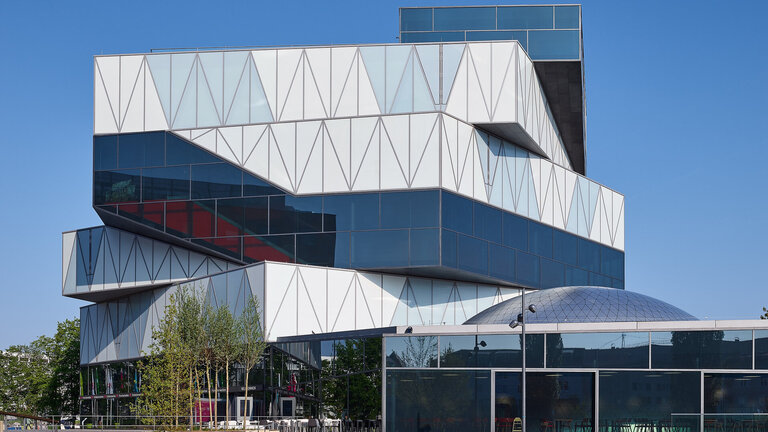What has long been a recipe for success in the automotive industry is seen by many in the construction industry as the death-knell for architecture: modular construction does promise speed, savings and efficiency, yet at the same time, images of concrete slab constructions and 1970s satellite towns inevitably come to mind. An alternative is demonstrated by digitales bauen GmbH. The company is based in the German city of Karlsruhe and since January 1, 2020, it has been a subsidiary of Drees & Sommer SE, the planning and consulting company with headquarters in Stuttgart. Over the last 20 years, digitales bauen has systematically developed a method that allows even extremely demanding architectural designs to be translated into modules.
The basic idea of modular construction is not new: for many years now, buildings have been assembled according to the modular principle – but usually with a compromise on aesthetics and functionality. This resulted in shoebox architecture. This has little to do with reality, as demonstrated by spectacular buildings such as the experimenta science center and museum in the German city of Heilbronn or the innovative FOUR district in Frankfurt am Main, Germany. The architecture of these buildings is unique – and modular.
A Series of Individual Units
In many cases, small geometric corrections can significantly reduce the variety of designs without impairing the functionality or architectural effect. In the case of experimenta, for example, the experts optimized the façade design in such a way that the initial 200+ different façade elements were brought down to 50 in the end.
The special feature of this approach is that creative ideas and sophisticated individual elements do not fall victim to standard solutions from the modular construction kit. Using this method, planners are instead able to get a systematic grip on even complex buildings with difficult geometries. This is also the difference compared to builders that offer predefined system construction kits. While these kits are limited in terms of choice and functionality, the method used by digitales bauen aims to take each draft and then extract parts of the building as modules, including technical installations, to develop them like products and prefabricate them as far as possible.
Buildings from the Assembly Line
In order to apply these benefits across the entire construction and real estate industry, Drees & Sommer has held a 74.9 percent stake in digitales bauen since January 1, 2020, after ten years of close cooperation. Company founder and Managing Director Dr. Volkmar Hovestadt has a 25.1 percent shareholding. He manages the company together with Veit Thurm, Partner at Drees & Sommer SE.

